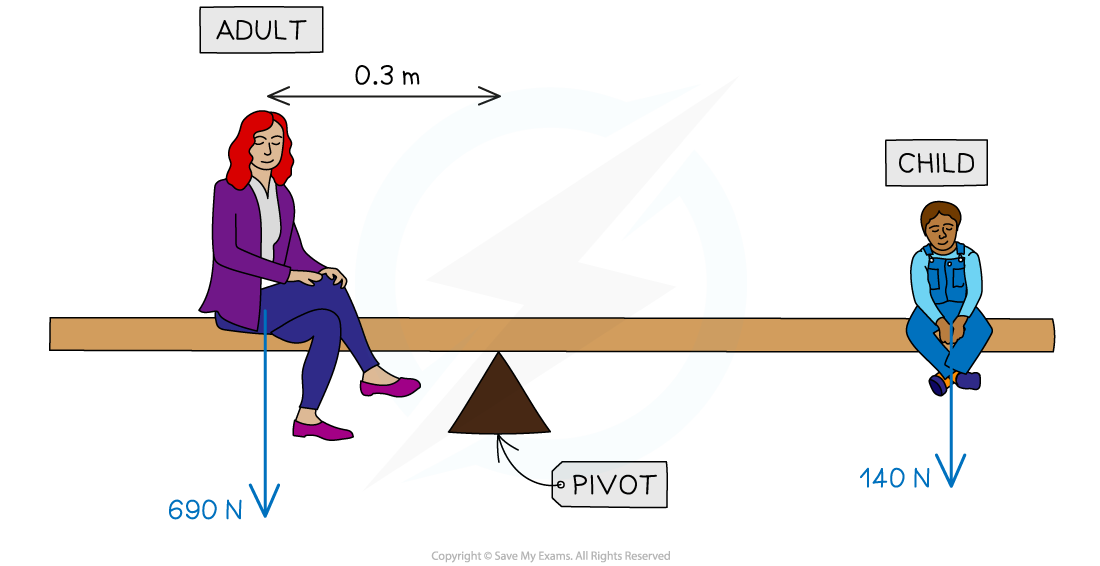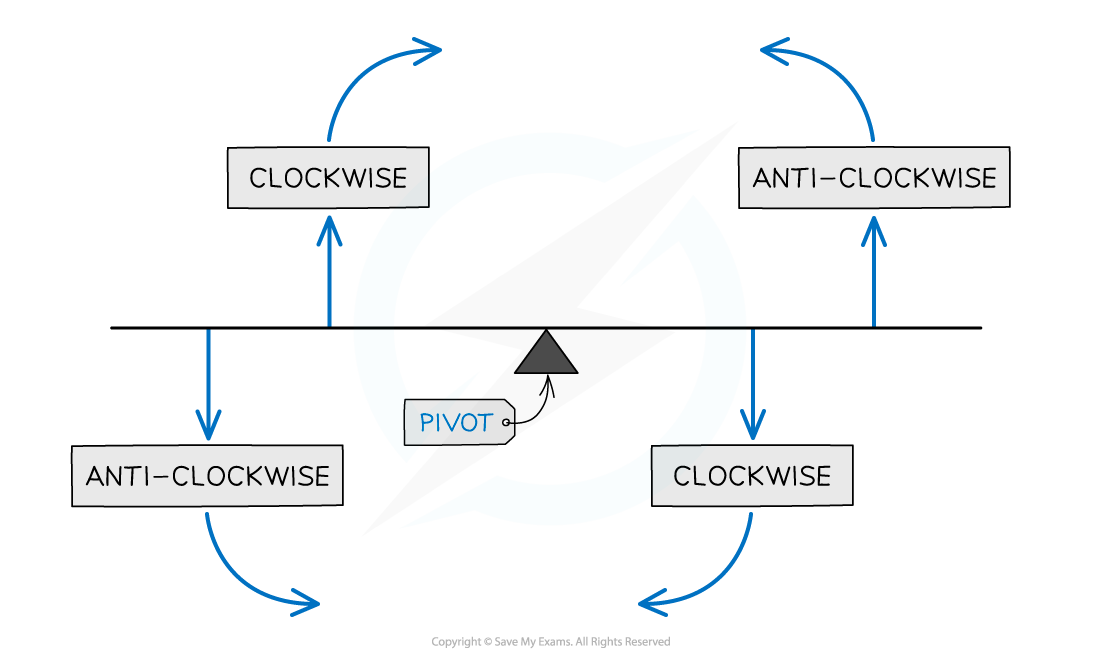The Principle of Moments (AQA GCSE Physics) : Revision Note
The Principle of Moments
The principle of moments states that:
If an object is balanced, the total clockwise moment about a pivot equals the total anticlockwise moment about that pivot
Remember that the moment = force × distance from a pivot
The forces should be perpendicular to the distance from the pivot
For example, on a horizontal beam, the forces which will cause a moment are those directed upwards or downwards

Moments on a balanced beam
In the above diagram:
Force F2 is supplying a clockwise moment;
Forces F1 and F3 are supplying anticlockwise moments
Due to the principle of moments, if the beam is balanced
Total clockwise moments = Total anticlockwise moments
Hence:
F2 × d2 = (F1 × d1) + (F3 × d3)
Worked Example
A parent and child are at opposite ends of a playground see-saw. The parent weighs 690 N and the child weighs 140 N. The adult sits 0.3 m from the pivot. Calculate the distance the child must sit from the pivot for the see-saw to be balanced.

Answer:
Step 1: List the know quantities
Clockwise force (child), Fchild = 140 N
Anticlockwise force (adult), Fadult = 690 N
Distance of adult from the pivot, dadult = 0.3 m
Step 2: Write down the relevant equation
Moment = force × distance from pivot
For the see-saw to balance, the principle of moments states that
Total clockwise moments = Total anticlockwise moments
Step 3: Calculate the total clockwise moments
The clockwise moment is from the child
Momentchild = Fchild × dchild = 140 × dchild
Step 4: Calculate the total anticlockwise moments
The anticlockwise moment is from the adult
Momentadult = Fadult × dadult = 690 × 0.3 = 207 Nm
Step 5: Substitute into the principle of moments equation
140 × dchild = 207
Step 6: Rearrange for the distance of the child from the pivot
dchild = 207 ÷ 140 = 1.48 m
Examiner Tips and Tricks
Make sure that all the distances are in the same units and you’re considering the correct forces as clockwise or anticlockwise, as seen in the diagram below

Clockwise is defined as the direction the hands of a clock move (and anticlockwise as the opposite)


You've read 0 of your 5 free revision notes this week
Sign up now. It’s free!
Did this page help you?
